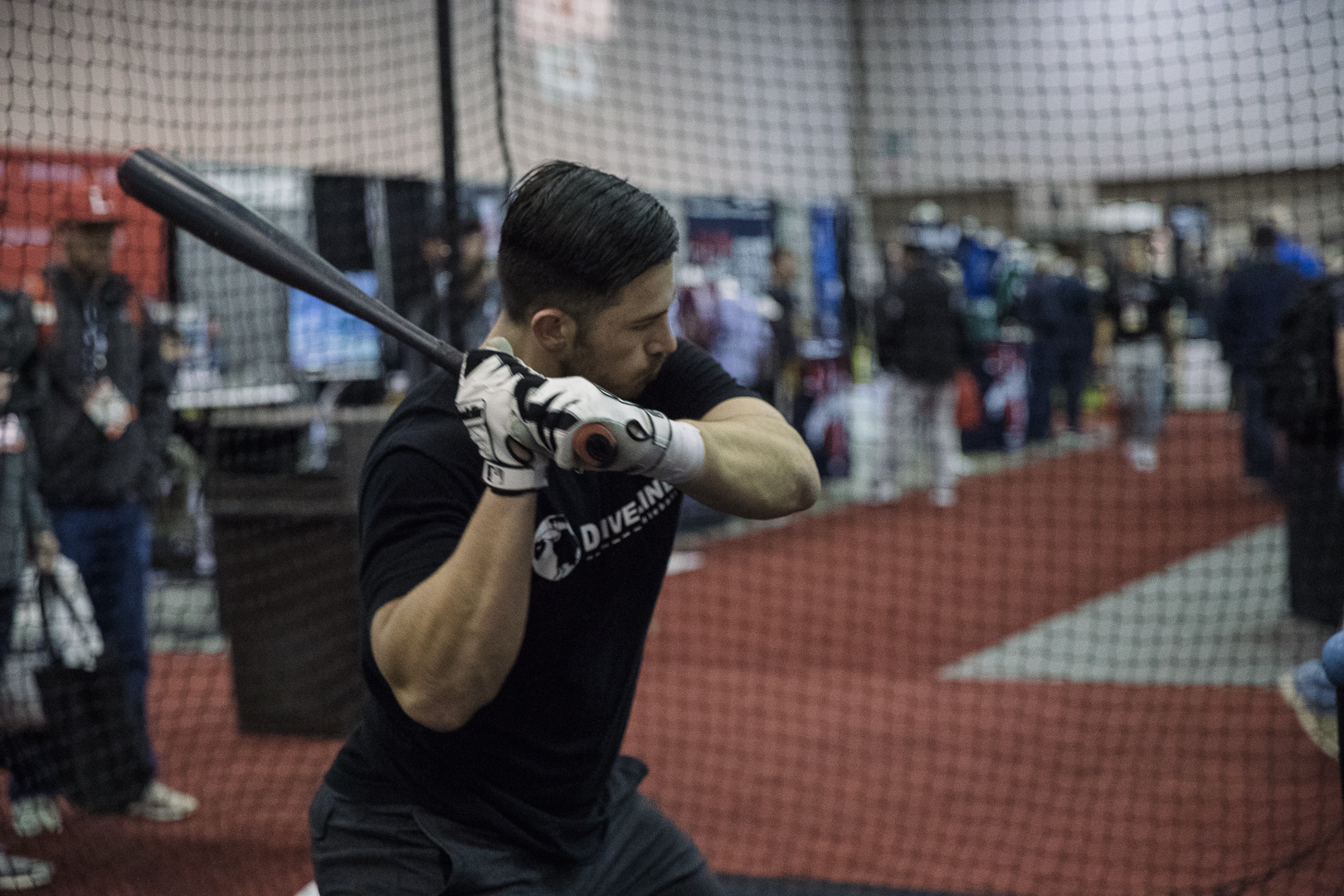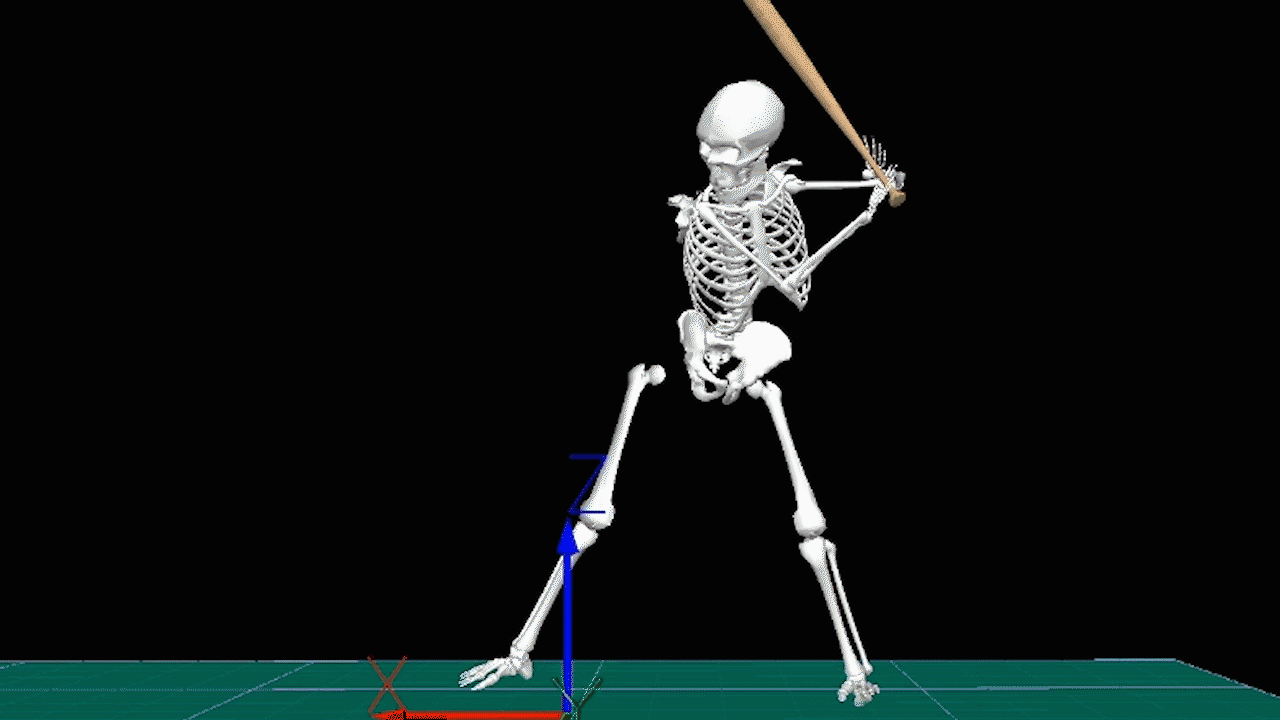Lessons from Golf: Introducing Bat Fitting

An updated version of this article can be view with this link.
In line with Driveline’s constant thirst for knowledge and curiosity, its hitting staff was recently in attendance for the Titleist Performance Institute’s first-ever OnBaseU certification program: a program dedicated to studying how baseball and softball athletes move and how to assess players’ movement capabilities. Dr. Greg Rose, one of the founding fathers of TPI, was one of the main speakers. There were many things that stuck out from the OnBaseU seminar, but the two are the focus for this article:
Dr. Rose’s four must-haves for any professional golfer
- Swing coach
- Strength coach
- Physical therapist
- Equipment expert
Dr. Rose’s three things that cause inefficiency problems:
- Mechanics
- Physical limitations
- Equipment
All of these must-haves and inefficiencies are addressed in baseball and in golf, but one in particular seems to have been side lined in hitting: a player’s equipment.

Foundations of Hitting
30 modules teaching you everything we know about hitting and hitting mechanics.
There’s an interesting dichotomy between golf and baseball in how equipment is valued and measured. Golf has its equipment down to a science (literally), but the relationship between hitters and their bats still seems to be very intuitive. Most guys go by feel—even big leaguers.
You’ll hear stories of Brock Holt, George Springer, Josh Reddick, and Sandy Leon all swinging Mookie Betts’s Axe Bat model MB50 during the playoffs. Mookie is listed at 5’ 9’’; Springer, 6’ 3’’. It’s unlikely that these two athletes would have the exact same specifications for the “perfect bat,” but this is baseball, and we’re just now getting around to measuring stuff. A world-class athlete’s intuition is something to be valued, but without taking objective measurements, we’ll never know for sure, nor will we know if there are adjustments that should be made.
Golf, however, is quite the opposite. When a serious golfer is looking to purchase a new set of clubs, the first thing he’ll do is go through a club fitting. There are a lot of different metrics, variables, and measurements that go into this process. Here’s a quick rundown of everything your club fitter will measure before you even take a swing:
- Length from top of wrist to tip of middle finger
- Hand size from bottom of palm to tip of middle finger
- Athlete’s height
- Length of athlete’s current clubs
Once these baseline measurements are taken, you get to start taking some swings. The following are some of the relevant swing and ball-flight metrics taken into account during a club fitting:
- Club head speed (bat speed, and most important): This metric will determine what kind of shaft best fits your swing: regular, stiff, or extra stiff. Similar to bat speed, club head speed rules all, and generally, the more an athlete has, the better.
- Ball Speed (exit velocity): The rate, in mph, in which the ball comes off the club head.
- Spin Rate: Generally, a golfer will want to keep his spin rate of all of his tee shots (if the goal is to maximize distance) between 2200 and 2500 rpm. In baseball, there’s very little we know currently about a hitter’s batted ball spin characteristics and how much that effects ball flight.
- Launch Angle: Similar to baseball, the athlete is going to want to optimize his launch angle according to the club head/ball speed he’s capable of producing. For golfers with elite club head speed (roughly 115+), they’re looking to stay within a desired launch angle between 12 and 15 degrees, with all other variables remaining constant.
- Distance and Carry: Distance refers to how far you are hitting the ball, and carry refers to how far it carries, or how much roll you are getting.
- Descent Angle: The angle at which the ball falls to the ground is the descent angle. If the angle is too steep, you lose distance and roll; too flat, and you’re sacrificing carry.
For any serious golfer, the first step in the process of buying new clubs is to go through a proper fitting. Being an avid golfer myself, I decided to go through this process to gain a better understanding of what all is entailed in the process. I went into this particularly curious as to how much of a difference a “fitted” driver would make versus one off the rack.
Similar to baseball, the quality of your respective weapon of choice can make a big difference in how well you’re able to strike the ball, minimize your mishits, and optimize launch and descent angle for maximum carry and roll. A Rawlings Big Stick you scoop up from your local academy isn’t nearly as high of quality compared to the wood you’ll see in a big league clubhouse—this much is obvious. But exactly how much of a difference can the proper equipment make?
Below are a couple of basic tables detailing some swings that were taken with an off-the-rack driver versus a “fitted” driver:
Looking at these findings, these were the changes in the most relevant and relatable metrics:
- An increase of 1.67 mph of average club head speed
- An increase of 2.42 mph of average ball speed
- An increase of 18.57 average yards of carry
- An increase of 22.03 average yards of total distance
Based at these results, the splits are pretty staggering. If you asked any golfer if he’d like to add an average of over 22 yards to his drive, it’s likely that 100% of them would resoundingly reply “Yes!”
This raises the question: Why is there no bat-fitting process for each individual hitter?
Driveline Baseball, being the ever-curious think tank that it is, has been began developing a process for this to test its validity. While not the same as golf and without the many ways to manipulate the bat as a golf club, the end goal is still the same: swing the bat faster and more efficiently, and hit the ball harder and farther.

Become the Hitter You Want To Be
Train at Driveline
Bat Fitting for Baseball
Here’s a breakdown of the process:
We set up each athlete with a Blast Motion Sensor to collect relevant swing metrics and test them with three different types of knobs: a traditional circular handle, a standard Axe Bat handle, and Axe Bat’s new ball-joint handle, which is a smaller, hybrid knob in between a traditional circular knob and the standard Axe Bat handle.

Initially, we run each athlete through at least twenty swings with each handle, collecting relevant swing and batted-ball metrics from the Blast Motion Sensor connected to each bat. Bat speed plays at all levels and is mainly what we’re after, but other metrics like peak hand speed, on plane percentage, and attack angle are also taken into consideration.
Once we determine which knob each individual athlete swings the fastest, we’ll then test the athlete with that particular handle, but with two different weight distributions: balanced and barrel-loaded.
Below is a sample report comparing swing metrics of an athlete’s standard game bat to the fitted bat of one of our on-site hitting trainees:
Looking at these findings, we can see when this athlete swings a fitted bat, he produces:
- An increased average bat speed of 3.1 mph
- An increased peak bat speed of 1.8 mph
- An increased average power generation of .34 kw
- An increased average body rotation of 5%
Now, we’re still in the infancy of this project, and we’ll begin to test for different variables like alloy vs composite, one-piece vs two-piece, handle circumference, etc., but out of the 17 athletes that we’ve fitted so far, our athletes’ “fitted bats” produced an average increased bat speed of 2.55 mph, as measured by our Blast sensor. The sample size is still a bit small, but we are excited to keep collecting data. We also expect to learn more once we are able to get longer term test and retest data from our athletes.
We are excited to continue this testing outside of Driveline with our Mobile Bat Fitting and Swing Analysis events throughout the country. We’ll be in Houston, TX, at Vendetta Sports Academy December 15-16th, the Dallas-Fort Worth area at the RockerB Ranch January 18-20th, and in Omaha, Nebraska, at Dynamic Velocity February 16-17th to continue collecting data as well as providing all athletes a swing analysis and batted-ball profile report at the end of each event.
Train at Driveline
Interested in training with us? Both in-gym and remote options are available!
- Athlete Questionnaire: Fill out with this link
- Email: [email protected]
- Phone: 425-523-4030
This article was written by Lead of Bat Fitting Collin Hetzler
Comment section
Add a Comment
You must be logged in to post a comment.
Christopher P -
Thisnliterally jeeps me up at night. I have been thinking about and going through the fitting process for years on bats. Golf is so far ahead of baseball. I remember playing baseball in 2002 and asking a teammate why there is a Golf channel where all thy do is give swing tips and drills but no baseball anything? This was pre social media and pre YouTube I think.
There are so many variables in a bat that I’ve been trying to get answers to for years. Ash v maple. Densities. Balanced vs end loaded. Cupped vs not. Using a different bat later in the game to overcome fatigue and catch up w a closer. Handles. Knobs. Finishes. Sizes. So much that we just don’t know and are just now being able to test.
Jeff Long -
This is great, truly. Also way to pick up a new custom fitted driver on Kyle’s dime!
Brian -
When testing for the knob, how do you find a bat with the same exact length, weight and distribution to compare to the axe bats? Wouldn’t using a different bat that’s not exactly the same as the axe bats except for the knob, throw off the results?
'@TheBasepaul -
Really great article. I would say grip and arm length are very important factors, as is whether a hitter tends to be “wristy” or “pushy”.
Katherine Roberts -
I have been working in golf for 18 years, 16 years in MLB. I am excited to see baseball embracing the technologies we use in golf. Not only is there so much to learn as it relates to equipment but we also need to embrace the technology being used in golf to assess movement. I can evaluate the technology such as 3D motion analysis and force plates (GRF) and develop a training protocol. We all need to be on the same page! Thanks for the great article.